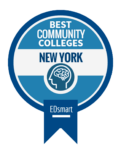Instructional Methods
Definitions of Instructional Methods at GCC
In Person
Course instruction is provided at a specific location on a specific day and time.
In Person By Video Link
Course instruction is provided using a video conferencing tool, which connects the instructor of a course section with students in one or more specific locations on a specific date and time. Each connected course section will list the location where the student will attend.
Not In Person – Asynchronous (Not at scheduled times)
Course content is delivered online with a flexible schedule as directed by the instructor.
Not In Person – Synchronous (At scheduled times)
Course content is delivered virtually/online on specific days and times as directed by the instructor.
Not In Person – Partially Synchronous (Some scheduled times required)
Course content is delivered virtually/online with some work required to be accessed on specific days and times, as directed by the instructor.
Hybrid
Course content is delivered at a specific location on a specific day and time (as with in-person classes), and part of the course is also completed virtually/online.
HyFlex
Combines online and in person instruction simultaneously into one single course section. Students are able to participate in class in different ways: as a synchronous distance learner (via real-time, video-streaming); as an asynchronous distance learner (accessing materials, recorded lectures, and responding at a later time); as an in person learner (physically present in the classroom); or as a flexible learner (with a degree of choice as to how they participate each week; sometimes in person, sometimes by streaming class sessions, etc.).
Instruction Delivery Locations
Batavia
In person instruction for this course is delivered on the Batavia Campus in an assigned classroom, lab or lecture hall.
Campus Center (Dansville, Medina, Lima, Warsaw)
In person instruction for this course is delivered at one of the regional campus centers in an assigned classroom or lab.
Online
Instruction for this course is delivered entirely online. Students may complete the coursework at any location where they have access to all necessary technology. Online courses may be offered using Synchronous, Asynchronous, or Partially Synchronous delivery methods.
Students should review Brightspace and the course syllabus for specific technology requirements. (Proctored exams may be required.)
Remote
The delivery location has changed: Instruction for this course would ordinarily be delivered in an “In Person” format at the Batavia Campus or a Campus Center; however, this term, it will be delivered virtually in a specified online delivery method: synchronous, asynchronous or partially synchronous. Many remote courses will replace in person learning with video conferencing requirements such as “Zoom”.
Students should review Brightspace and the course syllabus for specific technology requirements. (Proctored exams may be required.)
HyFlex Learning Option
What is HyFlex?
A HyFlex course is a course that allows each individual student to choose whether they attend class in person in the classroom, through web-conferencing into the live classroom, or online at their own time.
Students can choose the way they attend each class – for example, go to the first class meeting in the classroom, attend the second class meeting from home through video-conferencing, and work on materials for the third class meeting online on their own time.
This is what makes the course flexible – you can choose how you attend the course:
- Student is free to choose delivery mode that fits their preference and schedule.
- Students are not required to attend any class meetings in person.
- All Assignments will be available online.
Student Responsibilities in HyFlex Courses:
- Read the entire syllabus and know the policies for each class in which you are enrolled – pay attention to deadlines and due dates!
- If you choose to video-conference in to the class, make sure your computer set-up is ready for it – webcam, microphone, high-speed internet.
- Check the Course Calendar, Announcements, and Messages (e-mail) systems in Brightspace on a regular basis (at least 2-3 times per week).
- Keep current on class recordings, if not attending the live class (either in person or online).
- Keep current with all course assignments, quizzes, and examinations.
- If your course uses proctored exams be sure you plan this out early in the semester.
- Ask questions and communicate with the instructor.
- Remember that the greater degree of online learning you choose means that you also assume greater responsibility for your own learning outcomes. Complete the online Readiness Assessment to determine if you are a good candidate for a technology-based educational delivery system.
- Questions? Email: HyFlex@genesee.edu

